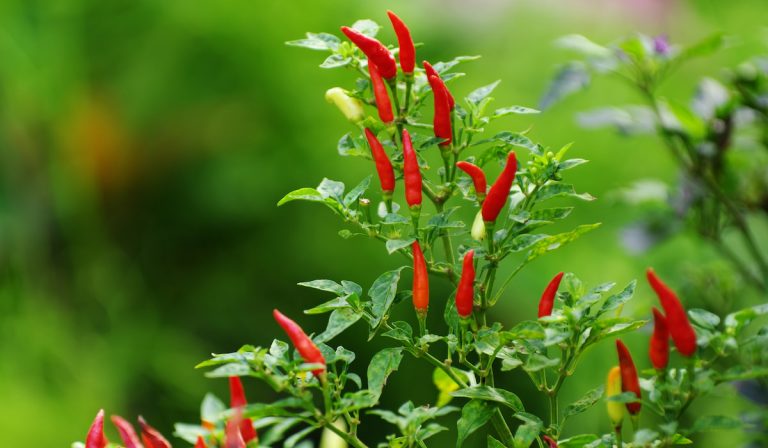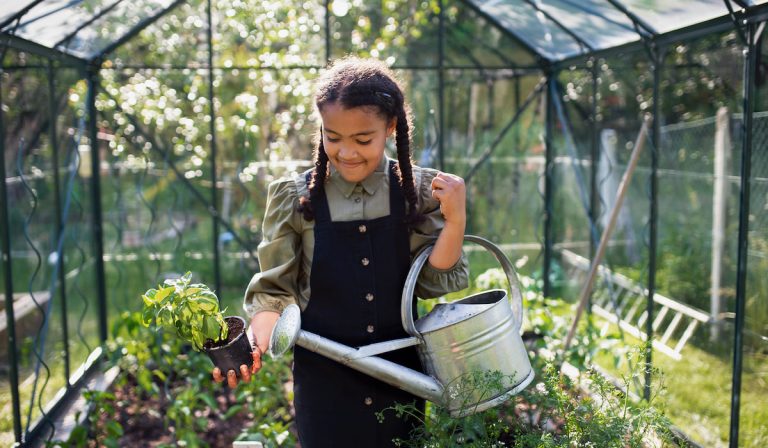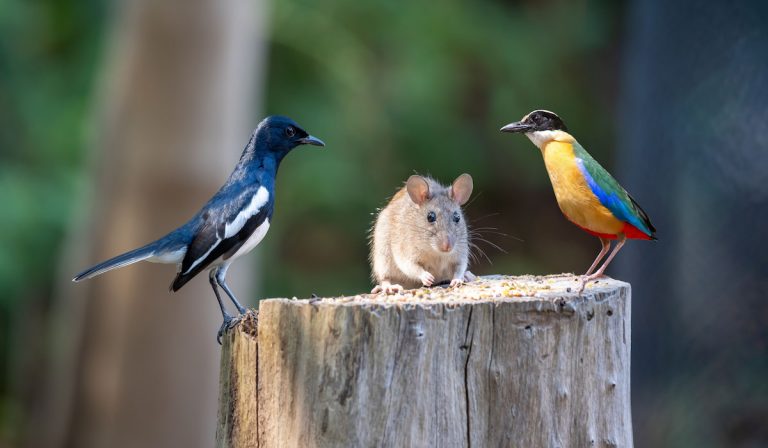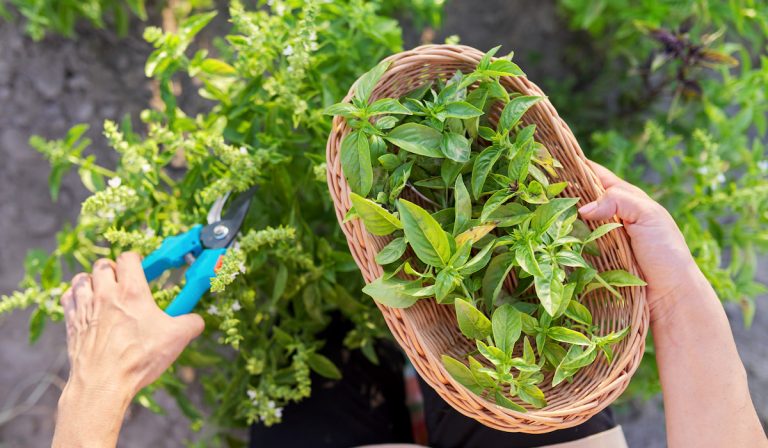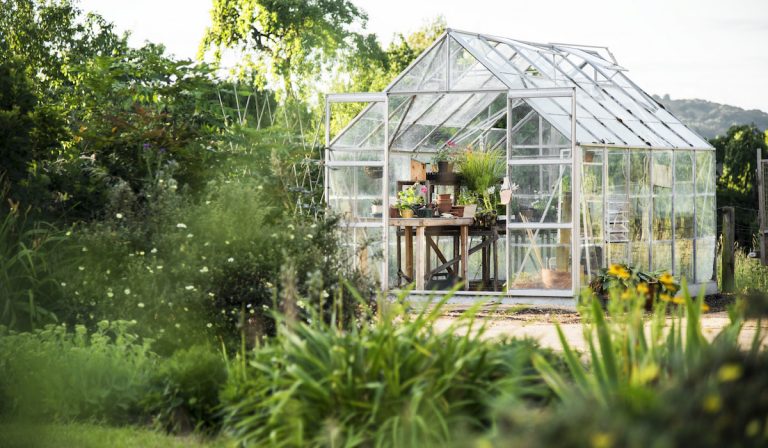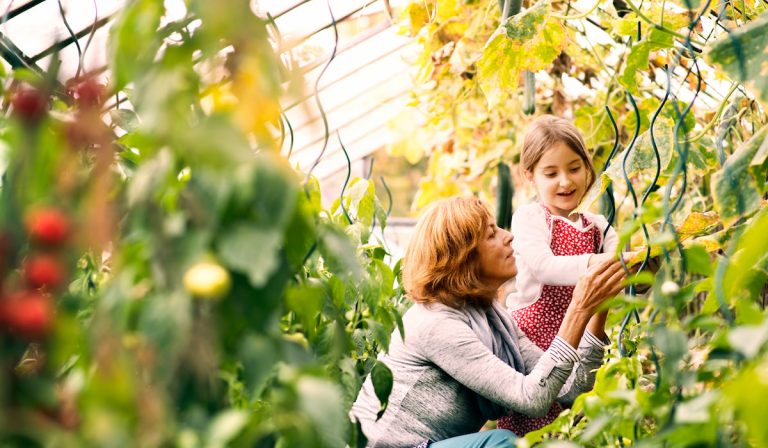Does Basil Need Full Sun?
Everyone should plant herbs in their home. Having home-grown herbs saves you the stress of going to the stores to get herbs and you get to enjoy freshly plucked herbs always.
One of the best types of herbs to grow is basil. Basil is easy to grow, but just like every other plant, it has some requirements. What are the requirements of basil? Does basil need full sun to thrive?
Basil grows best in full sun, but can also do well in partial sun. Basil grown in full sun grows faster and stronger, but full sun is not so necessary when growing basil in warm climates such as tropical and subtropical regions.
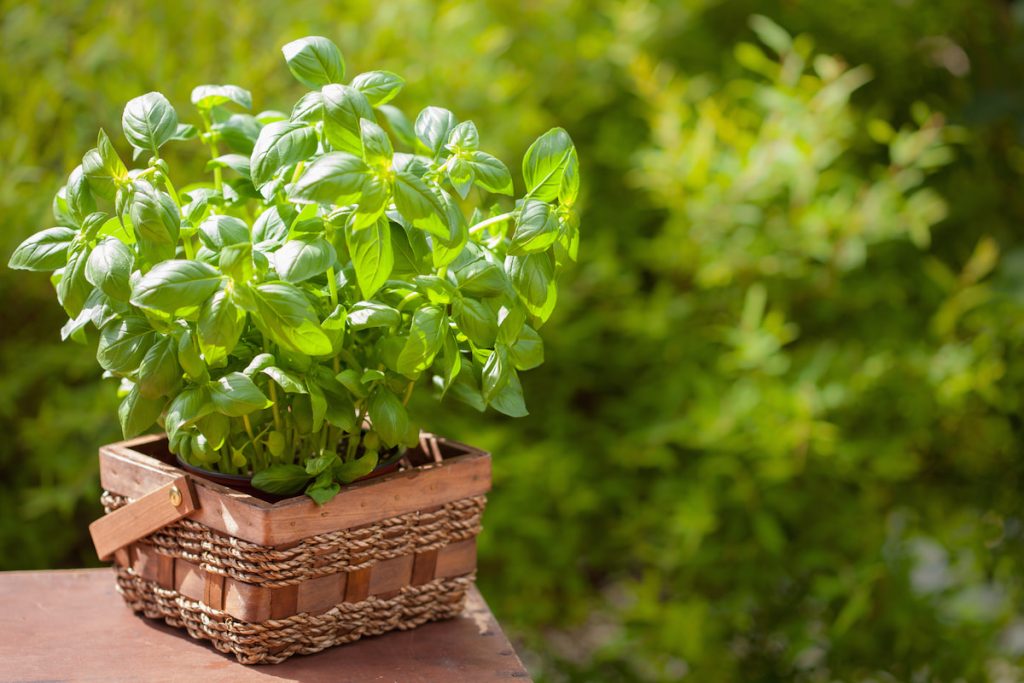
How many hours of sunlight does basil need? Can you grow basil using grow lights? We’ll cover these questions and more in this article.
Table of Contents
Light Needs of Basils
Basil can grow in various light conditions. It is important that you note that your region (i.e. climate) plays a major role in the way you grow your basil.
Growing Basil in Temperate Regions
Most people in the United States will have to provide their basils with 6-8 hours of sunlight in spring and fall while providing slight shade during the summer.
If you live in a temperate region, you should plant your basil in the southern or western parts of your home as these places receive more sunlight.
Growing Basil in Subtropical Regions
If you are in Florida or other places considered subtropical, you need to pay close attention to your plants especially in the summer months.
You should provide partial shade to your basil in the afternoon while giving them sufficient sunlight. Plant your basil in the southern or eastern parts of your home.
Growing Basil in Tropical Regions
Tropical regions are warmer than other regions, so basil may grow poorly if exposed to the midday sun. You should grow your basil in partial shade so that they receive 4-6 hours of sunlight daily. You can grow your basil in the northern or eastern parts of your home.
If your basil is showing signs of light deficiency, do not grow them in the northern part of the home.
Growing Basils Using Grow Lights in a Controlled Environment

You can grow basil without sunlight. Using grow lights, you can enjoy fresh basil. You can also use a grow light to grow basil in your basement.
Make sure that you give your basils 10-12 hours of grow light daily so that they can grow as healthy as those grown under sunlight.
Other Needs of Basil
Asides from light, here are other needs of basils:
1. Soil
Soil is needed long as you are not growing hydroponics or aquaponics basil. You need well-drained and aerated soil to grow basil. You also need to make sure that there are no harmful microbes or nematodes in the soil.
2. Water
You should water your basils at least once daily. In the fall, you may choose not to water your basil. During the summer, make sure that your basil has enough water so it doesn’t look dehydrated.
3. The potential of Hydrogen (pH)
Basil needs a pH that is either neutral or slightly alkaline/acidic. The recommended pH for basil is 6.5 to 7, but they can grow at pH 6.0 to 7.5. Make sure that you pay close attention to the soil pH because it helps your basils to collect as many nutrients as they need from the soil.
4. Fertilizer
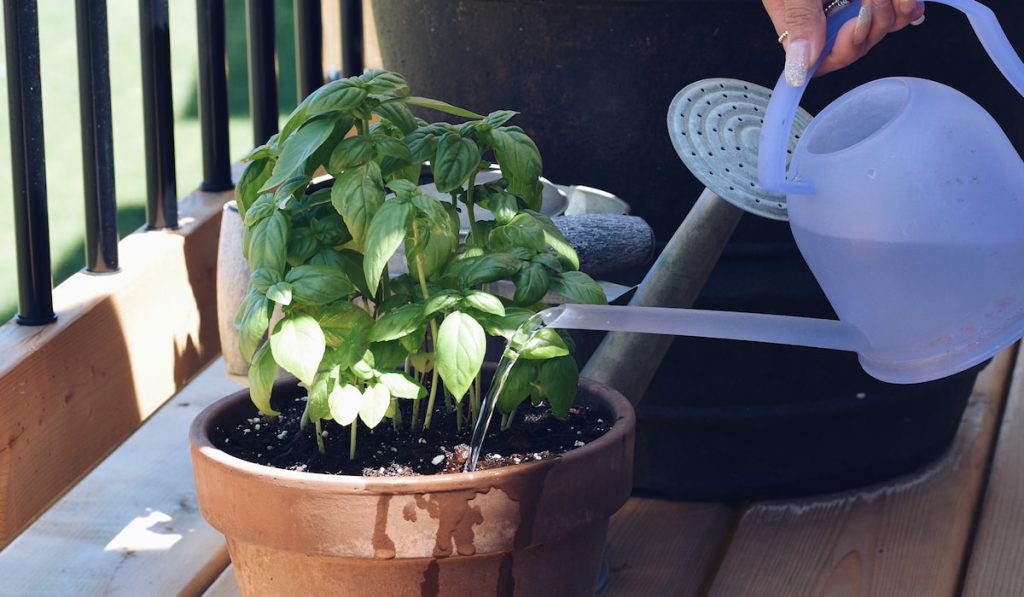
You enrich the soil with fertilizer. For basils, you can use organic or inorganic fertilizers. Since you may be growing basil as backyard herbs, organic fertilizer is best because it is cheaper and provides a wider range of nutrients.
Examples of organic fertilizers that you can give to your basils are compost and rotted manure.
5. Pruning Your Basils
You should occasionally prune your basils to encourage them to grow more branches and appear bushy. Aside from the growth of branches, pruning also encourages more leaf growth. You should continue pruning your basils in the growing season.
Ways to Grow Basil
Here are the three basic ways to grow basil:
1. Transplanting
Transplanting basil is very easy. All you have to do is purchase some basil from nurseries or collect some from your neighbor/friend and transplant it into your garden. To transplant your basil:
- Dig a Hole in the Ground: The hole should be deep and wide enough to accommodate the roots of your basil.
- Pour Water into the Hole: Wait for the water to drain away before you move to the next step.
- Insert your Basil into the Ground: Make sure that you do not damage the roots.
- Cover the Hole: Carefully add more soil to cover the roots of your basil
- Water the Plant: Make sure that you water both soil and the leaves of your basil.
2. From Cutting
Growing basils from cutting is easy. Follow the steps below:
- Cut a Branch from an Older Basil: Make sure that the branch has at least a pair of leaves and no flower.
- Insert the Branch in a Glass of Water: 2-3 inches of the branch should be immersed in water.
- Change the Water Regularly: Make sure that the water remains crystal clear.
- *Observe the Branch for Roots: In 10-14 days, you should observe some roots growing in the immersed parts of the branch.
- Plant the Cutting: Follow the steps involved in transplanting basils above.
*You need patience to observe the root growth in this method.
3. From Seeds
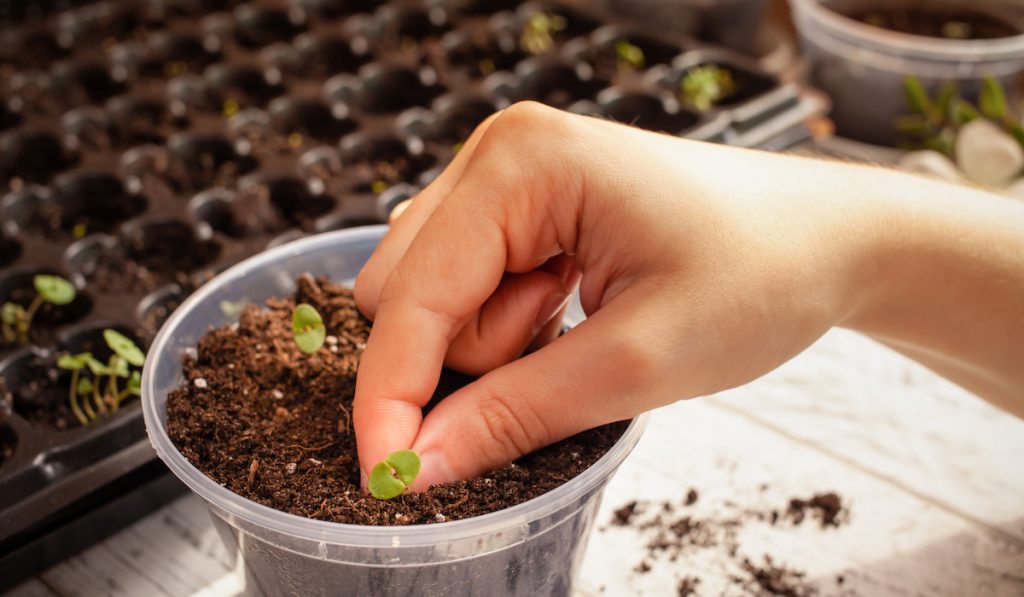
Would you like to start your basils from seeds? Here are the steps involved in growing basils from seeds:
- Purchase the Seeds: You can buy your favorite variety from local stores and malls.
- Soak the Seeds in Water: Soak the seeds in water for 10-15 minutes to encourage them to germinate quickly.
- Plant the Seeds: Plant the seeds in a hole that is ½ to 1 inch deep.
- Cover the Seeds: Make sure that the seeds are fully covered.
- Water the Soil: Do not flood the soil with water.
In about 10 days, you should see some basil seedlings. Remember that you should not stop watering the seeds.
Related Questions and Answers
1. How Do You Know That Your Basils Need More Light?
If you see that the stem of your plants is long and weak, you know that your plants need more light. Ask yourself: How many hours of light does the basil receive daily? If the answer is less than 5 hours of light and you are seeing some signs of weakness in your plants, they need more light.
2. Can You Give Basils Too Much Light?
While plants need light to photosynthesize, they need darkness as well to grow. This is why you see that your plants have grown taller when you wake up in the morning. Giving too much light to your basil is counter-productive and they do not need it.
3. Which Is Best for Basil Between Sunlight and Grow Lights?
Aside from light itself that the sun provides, sunlight also provides your basil with heat and some radiations that can prevent the growth of bacteria and other microbes that can harm your plants. Sunlight is best for your plants, but if it is not available, you can use grow lights.
4. Can You Grow Basil in Containers or Raised Garden Beds?

Growing basils in containers and raised garden beds is best because you can provide them with just the right type of soil. You can also sterilize the soil in containers to prevent microbes from harming your plants. Make sure that the soil is well-drained.
5. Are There Companion Plants for Basil?
You can grow various types of plants with basil. Examples of plants that you can grow with basils are:
- Asparagus
- Oreganos
- Peppers
- Marigolds
- Root vegetables
Remember to provide sufficient space to both your basil and their companion plants.
Final Thoughts
Basil grows best in full sun but can tolerate partial sun according to the region.
Remember that aside from light, your plants has other needs such as temperature, pH, humidity, space, etc.
Provide the right conditions to your basil and see how strong and healthy it grows.
Resources
- https://extension.umn.edu/vegetables/growing-basil
- https://www.fiskars.com/en-us/gardening-and-yard-care/ideas-and-how-tos/planting-and-prep/growing-basil-planting-and-harvesting
- https://www.thekitchn.com/everything-you-need-to-know-about-growing-basil-221272
- https://www.thespruce.com/how-to-grow-basil-plants-1402624


